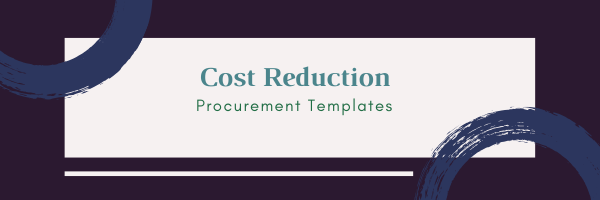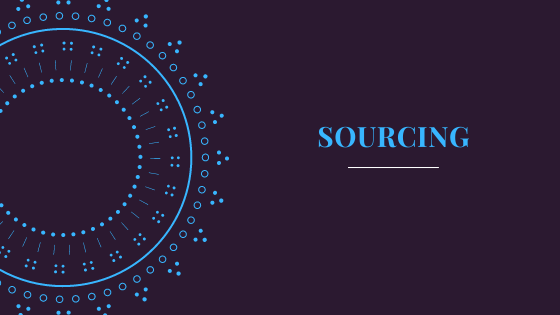There are different ways to achieve cost reduction and the example i’m going to use is a cost reduction tracker.
The first step for understanding your spend profile is to conduct some spend analysis. It is possible to segment spend in different ways either by category or using the pareto analysis. Check this against how much of this spend is under contract and whether if a competitive exercise was run. It sounds simple but undertaking a competitive tender exercise helps organization perform better in cost effectiveness and cost reduction
The second step is training to reduce maverick spend by educating end users about why they need to fall in line with the procurement policy. Most employees want to buy correctly but some just don’t know where to start. It’s appropriate to offer training and information so that the organization has a cohesive outlook on “how to buy”. Employees who involve procurement are more likely contribute to overall cost effective decision making.
Thirdly ensure demand management is in place. If it’s possible to decrease the demand, you may get an immediate cost saving. For every pound you save, sales has to work much harder to bring in profits for the same return. Don’t be afraid to push back and ask the budget holder whether if they really need the product or service for example does a meeting need to be physical when a conference call will suffice. Asking this question once won’t save much but if an organization spends a huge amount on travel, a demand management policy can make a cost reduction target an easy quick win.
The fourth way to gain cost reduction opportunities is to work with suppliers. By having supplier relationship management in place more value can be extracted leading to a win win scenario. There may be options to switch to different brands, materials, use new technology etc.
Finally the fifth component is to take into account total cost of ownership. Buying something cheap might be more expensive long term. Rack your brains to consider what can be done to make savings both cashable and sustainable.
- Budgetary Control
- Standard Costing
- Simplification and Variety Reduction
- Planning and Control of Finance
- Cost Benefit Analysis
- Value Analysis
- Improvement in Design
- Material Control
- Labor Control
- Overhead Control
- Market Research
A tracker is suitable for contract management savings initiatives. ( assume that contracts are in place) although an RFI is used this is to gather intelligence and not used as a traditional PQQ (i.e. suppliers are not being pre-qualified) some suppliers may be resistant to filling in more forms and moan about procurement paperwork. If required go through the questions as part of the regular service review meeting.
Most companies spend a lot of time and effort preparing a tender sometimes with a big project team, but once the contract is signed the benefits are not measured. Kick start your continuous improvement initiative with key suppliers and use the spreadsheet to track high-level progress.
Why use a cost reduction tracker?
Some organisations might argue that they don’t need to track savings because they don’t negotiate and automatically accept the lowest tender price, or savings is less important because the price should not override quality. This is an incorrect view, though the quality is very important it doesn’t mean we shouldn’t get the best price available, this can be in the form of cashable savings or tracked as a cost avoidance. All value that you are able to achieve should be captured.
Let’s talk about cost
I will quickly glide over manufacturing. Cost is comprised off:
- Raw materials
- Labour
- Overheads
The supplier profit is not a cost though it is a component of the final price.
Cost can further be split out into:
Direct cost- driven by how the product is made such as type of paper for a book
Indirect cost such as overheads, labour, administration.
Some cost will be fixed. For example, rent will be the same regardless of volume sold. Some cost is variable, for example producing in larger quantity might lower cost because of economies of scale.
Procurement’s involvement
Procurement professionals might want to understand the cost structure to determine whether if there is room for price negotiations
Understanding cost units mean you might be able to negotiate on specific components or compare supplier cost broken down into units. Price can be made up of different elements. Delivery, support, maintenance, defects, training, handling cost, commodity price, defects, risk.
Knowing the cost and profit allows you to negotiate a sensible amount. If supplier margins are eroded too much the quality side might not be as good.
Cost can be calculated in different ways.
Marginal cost is calculating the cost of producing additional units and the saving made if these additional units were not included. The marginal cost of an item is its variable cost. …Marginal costing is the accounting system in which variable costs are charged to cost units and fixed costs of the period are written off in full against the aggregate contribution.
Absorption costing is the total cost of producing products. a method of calculating the cost of a product or enterprise by taking into account indirect expenses (overheads) as well as direct costs.
You can read about markup and margins in more detail
Breakeven
The point at which production cost equals the selling price with no profit or loss. You can get a blank breakeven template here
If you require a more sophisticated tool as a cost reduction tracker try smart by GEP



